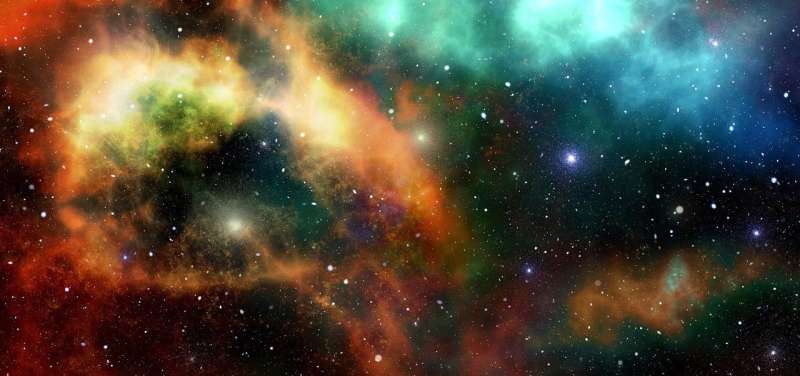This article has been reviewed according to Science X's editorial process and policies. Editors have highlighted the following attributes while ensuring the content's credibility:
fact-checked
peer-reviewed publication
trusted source
proofread
Citizen science project identifies 20 new astronomical discoveries

A citizen science project, which invites members of the public to take part in identifying cosmic explosions, has already identified 20 new astronomical discoveries.
More than 2,000 volunteers across 105 different countries have worked on 600,000 classifications over a six-month period.
The project Kilonova Seekers aims to find kilonovae—the cosmic explosions of neutron stars and black holes colliding in distant galaxies.
Volunteers are asked to play "spot the difference" using data from the two Gravitational-wave Optical Transient Observer (GOTO) telescopes, which are located on opposite sides of the planet—on La Palma, in Spain's Canary Islands, and Australia's Siding Spring Observatory.
Dr. Lisa Kelsey, from the University of Portsmouth's Institute of Cosmology and Gravitation, said, "The success of Kilonova Seekers demonstrates the invaluable role of public participation in scientific discovery. The contribution of citizen scientists is really helping us push the boundaries of our understanding of the universe."
The first stage of Kilonova Seekers is presented in a paper published in Monthly Notices of the Royal Astronomical Society.
Although all of the 20 discoveries haven't been classified yet, the researchers have identified five as Type la Supernovae, which are powerful and bright explosions of stars.
Type la Supernovae are important in astronomy because they have a consistent peak brightness, which makes them useful as "standardizable candles" to measure distances in space. By knowing how bright these supernovae should be, astronomers can calculate how far away they are, which helps measure the accelerating expansion of the universe.
The other discovery that has been classified is a cataclysmic variable star. This is a binary star system consisting of a white dwarf star stealing matter from its companion star, which causes bright flashes of light.
Dr. Kelsey added, "The remaining 14 have not yet been classified, so we aren't sure exactly what they are."
One of the key accomplishments of the project is the speed of classification and consensus from the volunteers.
Dr. Kelsey said, "As we have volunteers from around the world, there is almost always someone online looking at the data in real-time."
Scientists monitor alerts from gravitational wave detectors LIGO, Virgo and KAGRA, which trigger GOTO telescopes within 30 seconds to begin searching the sky. Any images taken are then shared with the public via the Zooniverse, the world's largest and most popular platform for facilitating citizen science.
Kilonova Seekers launched publicly on Zooniverse on 11 July 2023 and there were 1,000 classifications within the first 30 minutes.
Based on data obtained from Google Analytics, there are participants from every continent, except Antarctica. The wide accessibility of Zooniverse projects enables researchers to reach countries that may be traditionally underrepresented in astronomical communities.
The United States is by far the largest contributor, with a total of 1,284 users. The United Kingdom has about half that, with 615 users. However, users from Portugal are the most active, with each person viewing more than 2,750 pages on average.
Dr. Kelsey added, "The project not only contributes to the discovery of transient phenomena but also enhances the development of next-generation classification algorithms. This means that with the help of the public, we can create better ways to sort and understand the information.
"This speed of human vetting is simply not sustainable without the dedication of our citizen scientists."
Dr. Tom Killestein, from the University of Turku in Finland, said, "Alongside all the discoveries the volunteers have made, they've created a list of over 20,000 gold standard examples that we've used to improve our machine learning classifiers. This powerful synergy between machine learning and citizen science will allow us to continually improve our algorithms, and directly increase the number of discoveries of supernovae and other exciting objects."
More information: T L Killestein et al, Kilonova Seekers: The GOTO project for real-time citizen science in time-domain astrophysics, Monthly Notices of the Royal Astronomical Society (2024). DOI: 10.1093/mnras/stae1817
Journal information: Monthly Notices of the Royal Astronomical Society
Provided by University of Portsmouth





















